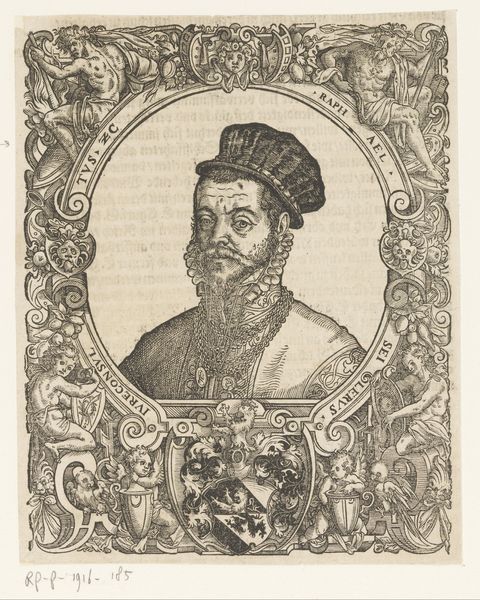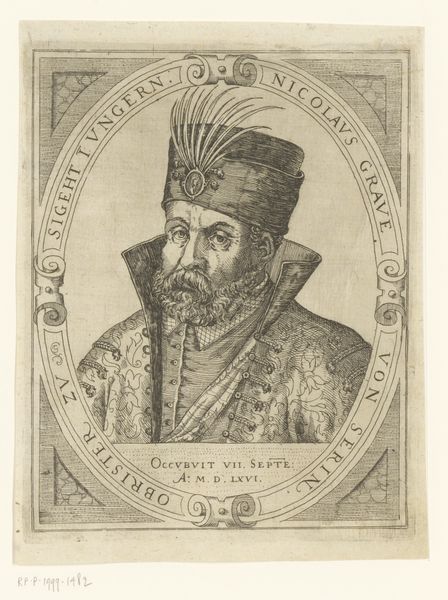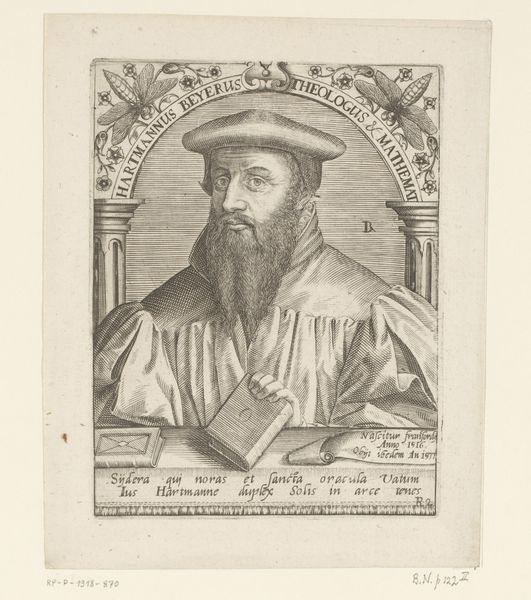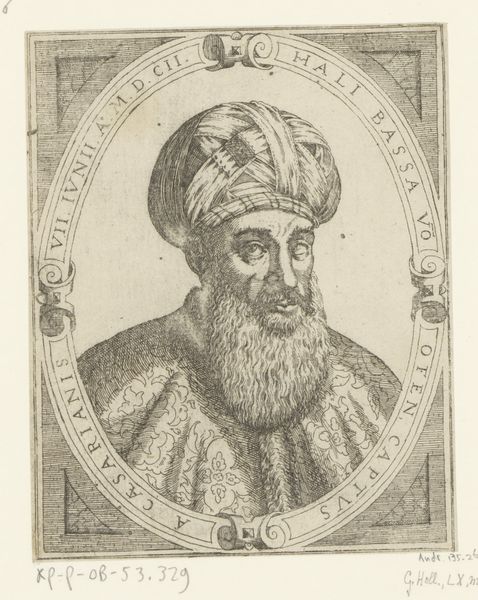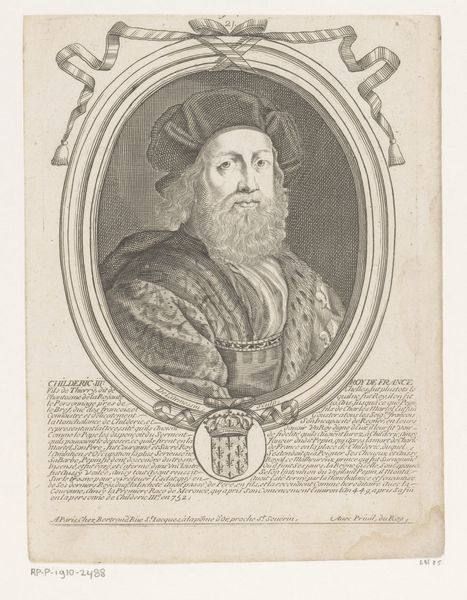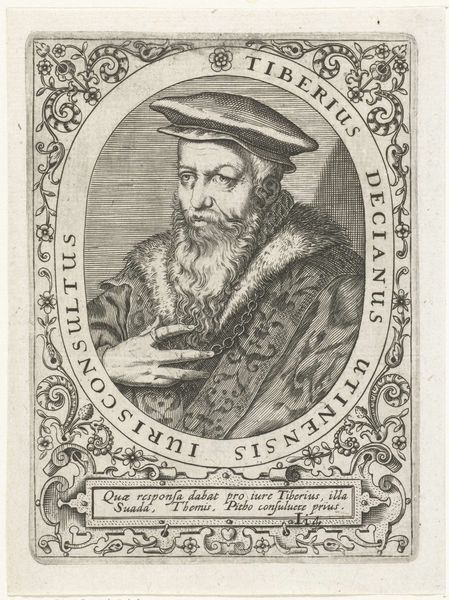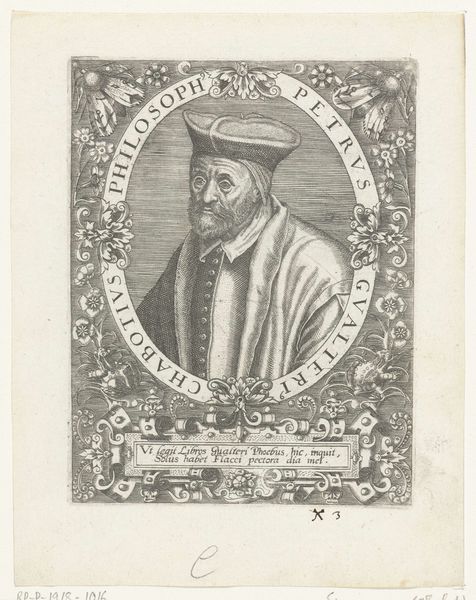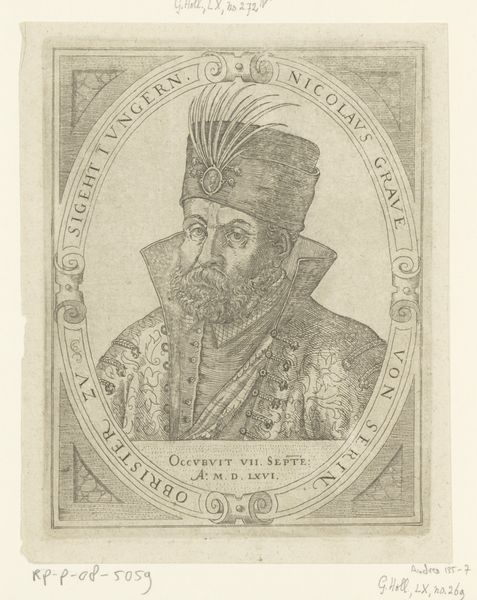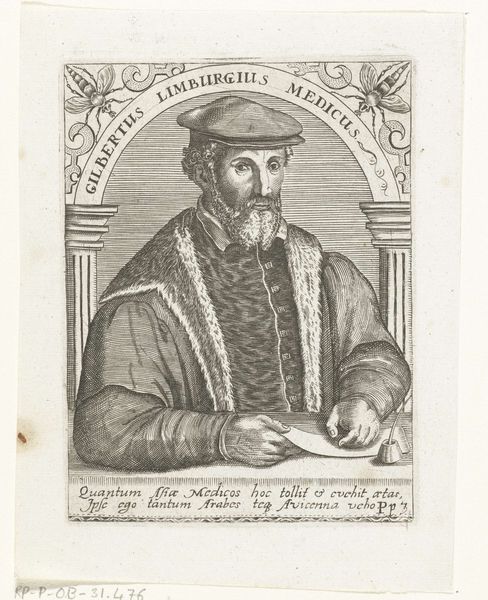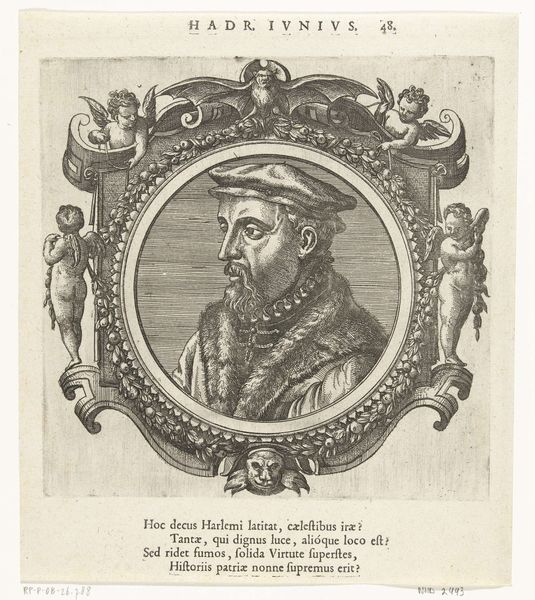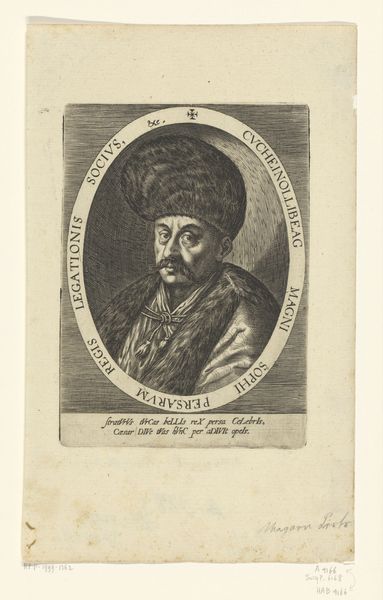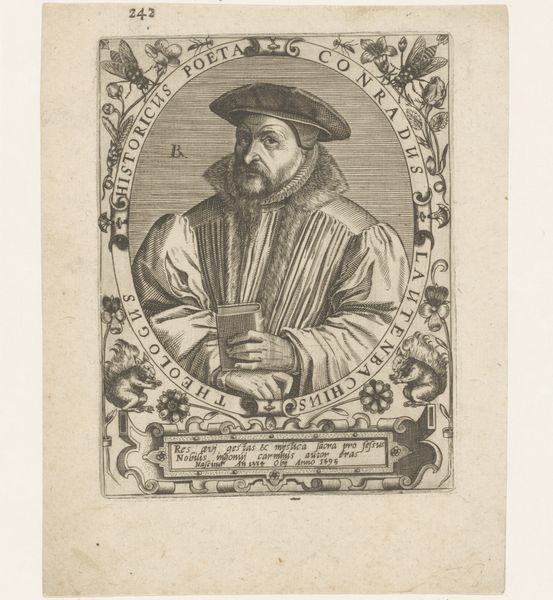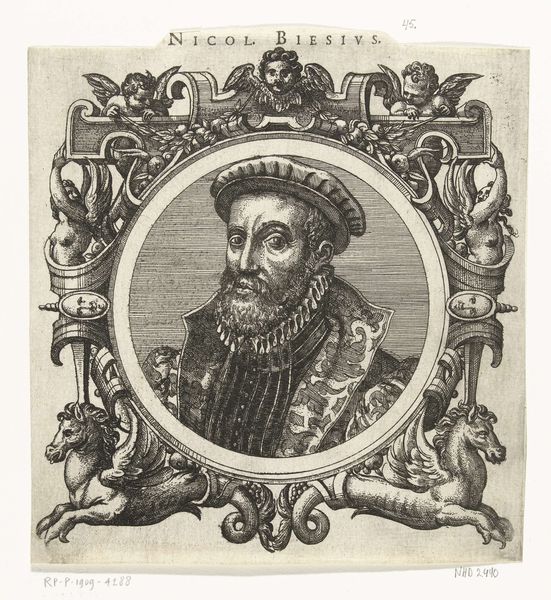
print, engraving
#
portrait
#
pen drawing
# print
#
pen illustration
#
11_renaissance
#
northern-renaissance
#
engraving
Dimensions: height 140 mm, width 100 mm
Copyright: Rijks Museum: Open Domain
Editor: This is Theodor de Bry's "Portret van Johannes Posth," an engraving from around 1597 to 1599. I'm immediately struck by the formality and almost severity of the sitter's expression, contrasted by the ornate, almost whimsical details in the surrounding frame. How do you interpret this work, especially considering the historical context? Curator: What I find fascinating about this portrait is how it exemplifies the intersection of power, knowledge, and representation in the late 16th century. De Bry, working within the Northern Renaissance tradition, presents Posth not merely as an individual, but as a figure embodying the humanist ideals of the time. Who was Posth? And what clues does De Bry give us about his societal role? Editor: According to the Rijksmuseum, he was a medical doctor. I see Latin text and architectural details... maybe a reference to Posth's profession or social status? Curator: Precisely! The architectural and natural motifs speak to a world steeped in classical learning and a belief in the power of observation and reason. Considering the historical backdrop of the Reformation and the rise of scientific inquiry, this portrait can be viewed as a statement about the changing roles of intellectuals and professionals. The inclusion of Posth’s profession and its inherent link to privileged knowledge reinforces existing power structures. Do you agree that the composition lends itself to this reading? Editor: That's a good point. I see how the ornate frame could also be viewed not just as decoration, but as further emphasizing Posth’s elevated status. Curator: Exactly. By examining these portraits, we begin to understand not just the individual, but also the complex social and intellectual landscape that shaped them. We can view it as a window into understanding how elites have been historically represented. Editor: That gives me a lot to think about regarding how portraiture can function as both an artistic and a social artifact. Curator: Indeed! And that’s where art history can intersect with social critique, offering a richer understanding of our past.
Comments
No comments
Be the first to comment and join the conversation on the ultimate creative platform.
